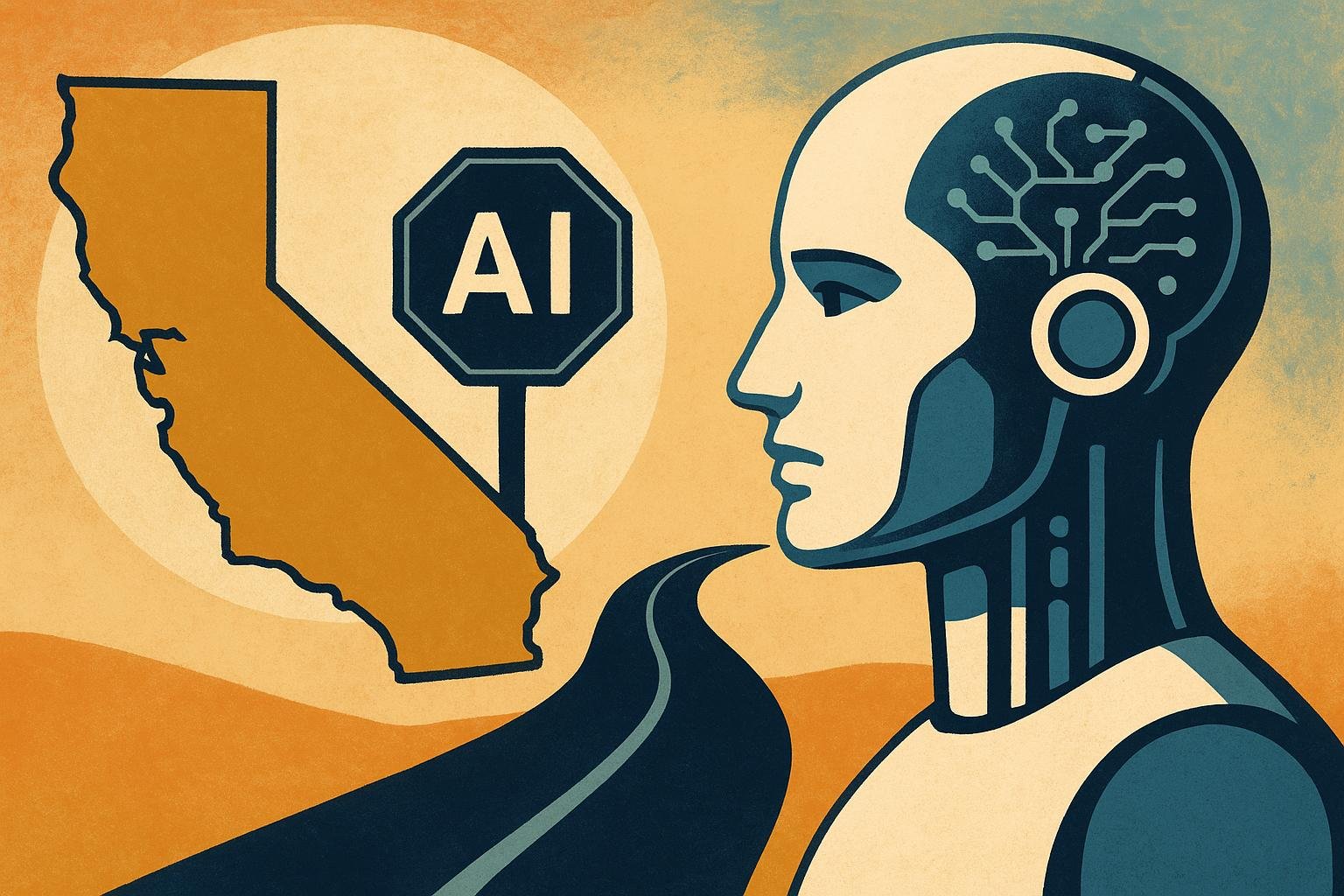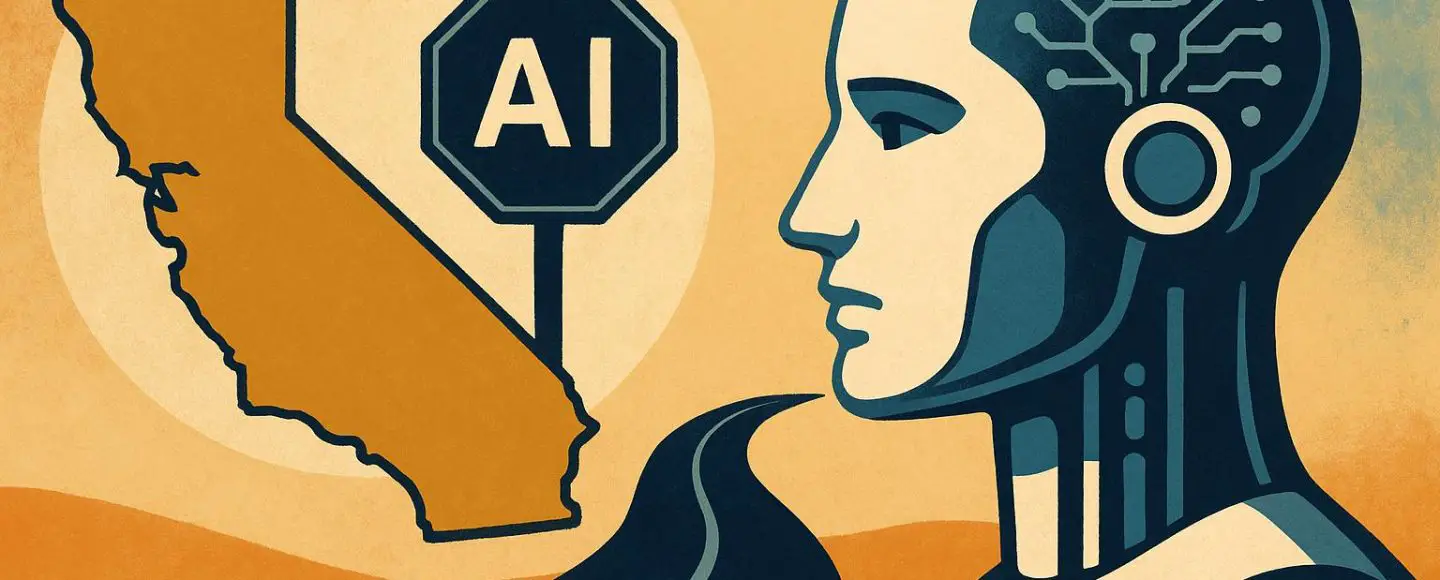

California Leads Charge on AI Regulation
California Leads Charge on AI Regulation as Governor Gavin Newsom launches one of the United States’ most sweeping initiatives to shape artificial intelligence policy. With the state serving as home to the world’s most influential tech companies, California’s bold move toward AI oversight places it in a pivotal leadership role nationally and internationally. The executive order signed by Newsom aims to create a regulatory framework that promotes responsible AI innovation, addresses pressing risks such as misinformation and job displacement, and positions the state as a global standard-setter in AI safety and ethics.
Key Takeaways
- Governor Newsom’s executive order focuses on balancing AI innovation with the need for public safety and transparency.
- California’s AI policy could influence federal U.S. regulations and global frameworks like the EU AI Act.
- The initiative responds to growing concerns about AI misuse, such as deepfakes, algorithmic bias, and labor disruption.
- California’s approach is being closely monitored by tech leaders, policymakers, and international observers.
A Closer Look at California’s AI Executive Order
Governor Gavin Newsom signed an executive order in September 2023 that directs California agencies to assess the potential benefits and risks of generative AI technologies. This order aims to establish criteria for safe AI deployment in public services and guide future legislative proposals. The California AI regulation effort calls for input from academia, industry leaders, and civil rights organizations to ensure AI tools are equitable and accountable.
The executive order also mandates a comprehensive risk analysis, including how generative AI may affect misinformation, privacy rights, and public employment sectors. Early assessments emphasize caution regarding AI’s influence on democratic processes, particularly through deepfake content and automated narrative manipulation during elections.
Why Tech Leaders Are Watching California’s AI Playbook
As the birthplace of major AI products and platforms, California’s regulatory direction carries disproportionate weight in shaping industry norms. Tech executives are paying close attention to how the state balances innovation incentives with consumer protections. The executive order seeks not to stifle innovation, but to foster “responsible innovation” through AI ethics, transparency standards, and public trust initiatives.
“The future of AI cannot be left to chance. California has both the talent and ethical responsibility to lead in building guardrails that ensure these technologies benefit society,” said Kristina Lawson, AI Governance Fellow at the California Institute for Emerging Technology, during a recent public policy webinar on AI governance.
Startups and large AI firms alike are preparing to align their development pipelines with newly proposed rules that could shape future federal AI governance. Industry insiders say early compliance with California standards may create competitive advantage, just as it has with the state’s pioneering climate and data privacy policies. For more on the broader implications of national AI oversight, see the evolving landscape of U.S. AI regulations.
How California’s AI Oversight Compares Globally
California’s AI regulation strategy can be seen as a complement to broader discussions happening at the national and international levels. The European Union has taken the lead globally with its EU AI Act, which classifies AI uses into risk tiers and includes strict obligations for high-risk systems. In contrast, the United States has been slower to act, with the White House’s Blueprint for an AI Bill of Rights offering aspirational guidelines instead of codified rules.
| Region | Key AI Regulatory Framework | Focus Areas |
|---|---|---|
| California | Executive Order on AI Safety and Ethics (2023) | Public sector use, misinformation, ethical innovation, workforce impact |
| United States (Federal) | Blueprint for an AI Bill of Rights (2022) | Equity, transparency, privacy, rights-based governance (non-binding) |
| European Union | EU AI Act (2021 – pending enforcement) | Risk-based classification, product conformity, transparency obligations |
| China | AI Algorithm Regulation (2022) | Content control, user protection, algorithm registration |
Experts suggest that California’s proactive regulation could function similarly to the EU’s General Data Protection Regulation (GDPR), which became a de facto global privacy standard due to the region’s market influence. By setting a strong AI precedent, California may catalyze harmonized standards across North America and shape future global AI governance. These developments echo ongoing international AI governance trends already being tracked by regulators and tech industry leaders.
Timeline: California’s Journey to AI Regulation
California has demonstrated increasing interest in AI oversight over the past few years. Below is a visual timeline outlining key milestones that led to this executive order.
- 2019: State begins exploring AI’s implications for workforce development and ethics.
- 2020: California Legislature holds hearings on algorithmic accountability.
- 2021: Formation of AI study groups across state universities and tech policy think tanks.
- 2023: Governor Newsom signs Executive Order initiating formal AI governance strategy.
Public Sentiment and Real-World Concerns
The growing prevalence of generative AI has sparked fears among voters and regulators alike. Public opinion surveys show a majority of Californians support state action to mitigate AI risks, especially related to misinformation and employment loss.
Concerns are especially high around the use of deepfake technology in political campaigning. During recent local elections, manipulated AI videos impersonating candidates were circulated online, prompting demands for stricter content labeling and source verification. Labor unions have also raised alarms about job displacement in public services if AI systems automate core tasks without worker protections or transition support.
Civil liberties groups warn that unregulated AI introduces surveillance risks and biased decision-making. These concerns have pushed ethical AI to the forefront of the policy agenda. The need for transparent and enforceable guardrails is viewed as essential by many advocacy groups, echoing calls for protecting privacy as outlined in new efforts to safeguard Americans’ privacy.
Challenges and Next Steps for Responsible AI Innovation
Implementing a statewide, multi-sector AI regulatory framework will not be without its obstacles. Questions remain over how to define risk thresholds, align public and private sector compliance, and prevent regulatory gaps. The timeline for setting enforceable standards is still developing as stakeholder feedback is gathered throughout 2024.
Newsom’s administration has pledged to involve a broad coalition of voices in shaping the policy. Recommendations from public forums, academic working groups, and industry coalitions will inform potential legislation or agency rules in 2025.
By prioritizing ethical safeguards and innovation enablement, California aims to demonstrate that AI oversight can protect society without undermining technological advancement. Initiatives from other federal agencies, including those related to homeland security AI guidelines, show growing momentum across sectors and reinforce the importance of coordinated policies nationwide.
FAQ: Understanding California’s AI Regulation Initiative
- What is California’s AI regulation plan?
The plan, introduced via executive order, directs state agencies to evaluate and guide AI deployment in public services, focusing on safety, fairness, and innovation. - What is the purpose of the AI executive order in California?
It aims to ensure responsible AI integration, mitigate risks like misinformation and job disruption, and establish a foundation for future regulations. - How does California’s AI policy compare to EU and US federal policies?
California’s policy is more proactive than current U.S. federal efforts and aims to blend the rigor of the EU AI Act with a focus on innovation. - Who regulates AI in the United States?
AI regulation in the U.S. is currently decentralized. Agencies like the Federal Trade Commission and the White House Office of Science and Technology Policy play key roles, but there is no binding federal law yet.
Conclusion
California’s leadership in AI regulation marks a significant shift toward proactive governance in safeguarding public trust and innovation. By proposing robust frameworks for transparency, accountability, and algorithmic fairness, the state sets a precedent that could influence national standards. Its approach balances the need to foster technological advancement with the imperative to protect consumer privacy and civil rights. As other states and the federal government observe California’s regulatory journey, its efforts may catalyze broader, cohesive policies that ensure AI growth aligns with societal values.
References
Brynjolfsson, Erik, and Andrew McAfee. The Second Machine Age: Work, Progress, and Prosperity in a Time of Brilliant Technologies. W. W. Norton & Company, 2016.
Marcus, Gary, and Ernest Davis. Rebooting AI: Building Artificial Intelligence We Can Trust. Vintage, 2019.
Russell, Stuart. Human Compatible: Artificial Intelligence and the Problem of Control. Viking, 2019.
Webb, Amy. The Big Nine: How the Tech Titans and Their Thinking Machines Could Warp Humanity. PublicAffairs, 2019.
Crevier, Daniel. AI: The Tumultuous History of the Search for Artificial Intelligence. Basic Books, 1993.



